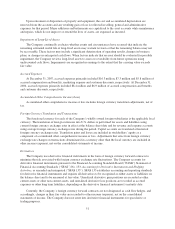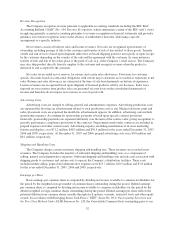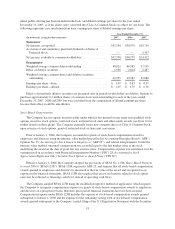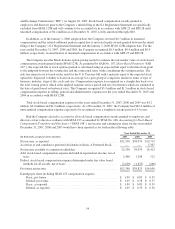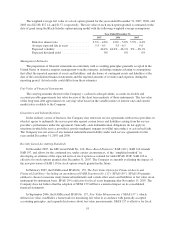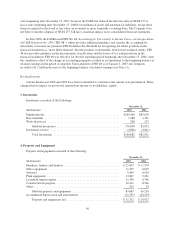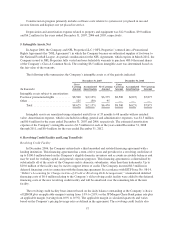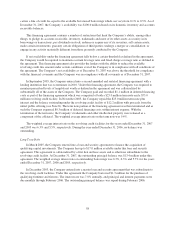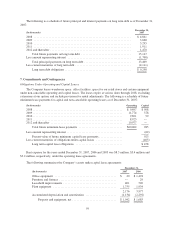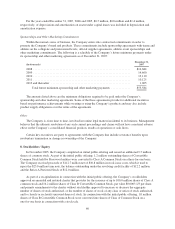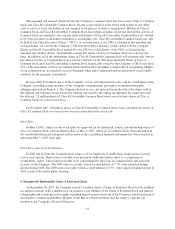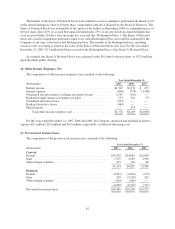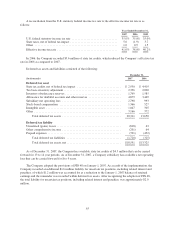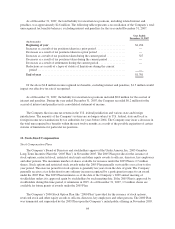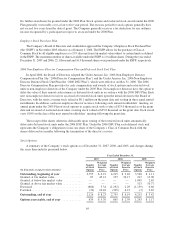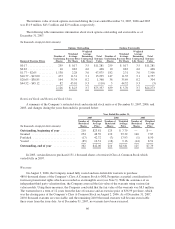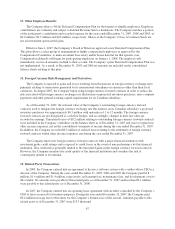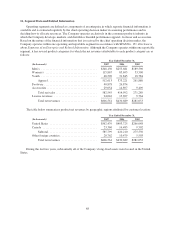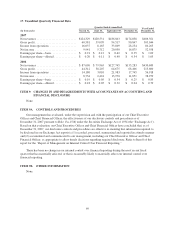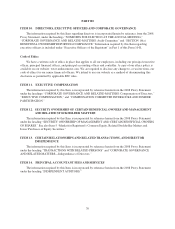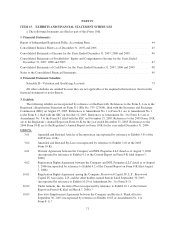Under Armour 2007 Annual Report Download - page 71
Download and view the complete annual report
Please find page 71 of the 2007 Under Armour annual report below. You can navigate through the pages in the report by either clicking on the pages listed below, or by using the keyword search tool below to find specific information within the annual report.The amended and restated charter divides the Company’s common stock into two classes, Class A Common
Stock and Class B Convertible Common Stock. Except as provided for in the future with respect to any other
class or series of stock, the holders of our common stock possess exclusive voting power. Holders of Class A
Common Stock and Class B Convertible Common Stock have identical rights, except that the holders of Class A
Common Stock are entitled to one vote per share and holders of Class B Convertible Common Stock are entitled
to 10 votes per share on all matters submitted to stockholder vote. Class B Convertible Common Stock may only
be held by our Chief Executive Officer (“CEO”), or a related party of our CEO, as defined in the amended and
restated charter. As a result, the Company’s CEO has more than a majority voting control over the Company.
Shares of Class B Convertible Stock not held by our CEO or a related party of our CEO, as defined in the
amended and restated charter, automatically convert into shares of Class A Common Stock on a one-for-one
basis. In addition, all of the outstanding shares of Class B Convertible Common Stock will automatically convert
into shares of Class A Common Stock on a one-for-one basis on the date upon which the shares of Class A
Common Stock and Class B Convertible Common Stock beneficially owned by the Company’s CEO is less than
15% of the total shares of Class A Common Stock and Class B Convertible Common Stock outstanding. Holders
of our common stock are entitled to receive dividends when and if authorized and declared out of assets legally
available for the payment of dividends.
In June 2006, 8.4 million shares of the Company’s Class A Common Stock were sold by stockholders of the
Company, including certain members of the Company’s management, pursuant to an underwritten public
offering registered on Form S-1. The Company did not receive any proceeds from the sale of the shares sold in
the offering and expenses incurred from the offering were paid by the selling stockholders. In connection with
the offering, 2.0 million shares of Class B Convertible Common Stock were converted into shares of Class A
Common Stock on a one-for-one basis.
In November 2007, 0.8 million shares of Class B Convertible Common Stock were converted into shares of
Class A Common Stock on a one-for-one basis in connection with a stock sale.
Stock Split
In March 2005, a three for one stock split was approved for all authorized, issued, and outstanding shares of
Class A Common Stock, with an effective date of May 3, 2005. All Class A Common Stock shares presented in
the consolidated financial statements and the notes to the consolidated financial statements have been restated to
reflect the May 3, 2005 stock split.
Notes Receivable from Stockholders
In 2005 and in 2000, the Company made loans to select employees to enable these employees to exercise
vested stock options. These notes receivable were presented within the balance sheet as a component of
stockholders’ equity. These notes receivable were collateralized by the Class A Common Stock and were full
recourse to the Company. The 2005 notes receivable, which accrued interest at 7.7%, were repaid including
interest during 2006. The 2000 notes receivable, which accrued interest at 5.5%, were repaid including interest in
2005 as part of the initial public offering.
9. Mandatorily Redeemable Series A Preferred Stock
On September 30, 2003, the Company issued 1.2 million shares of Series A Preferred Stock for $4.4 million
in cash proceeds net of $0.1 million in stock issuance costs. Holders of the Series A Preferred Stock had limited
voting rights and certain protective rights regarding major business decisions of the Company and the payment of
dividends to common stockholders. Holders of the Series A Preferred Stock had the ability to appoint one
member to the Company’s Board of Directors.
61


